Just days before leaving the White House at the end of his term in January 1953, President Harry Truman wrote to Maj. Ray Miller and commended him for the attention Miller provided to the Truman family and staff as the assistant White House physician.
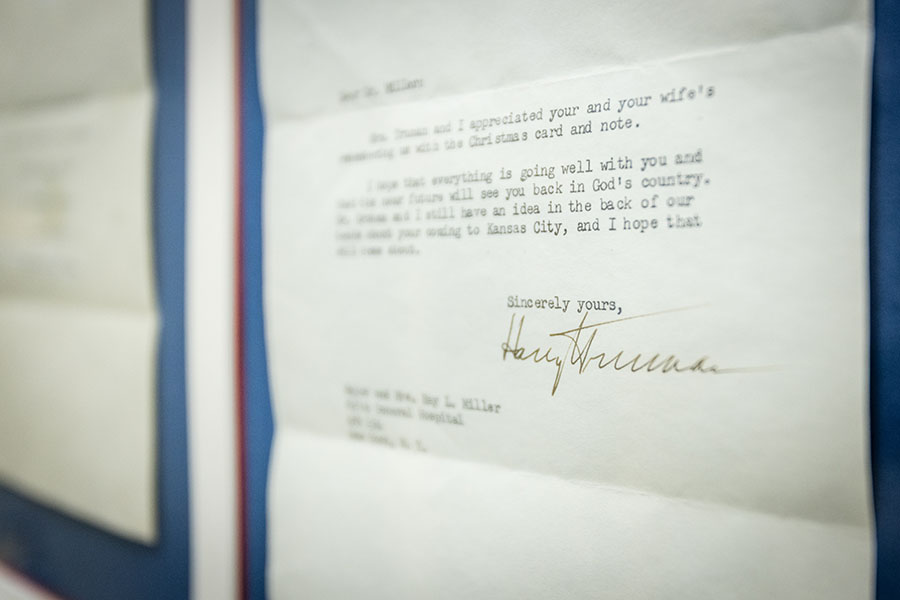
A letter Harry Truman wrote after his presidency to the Miller family, thanking them for a Christmas card. (Photos by Lauren Adams/Northwest Missouri State University)
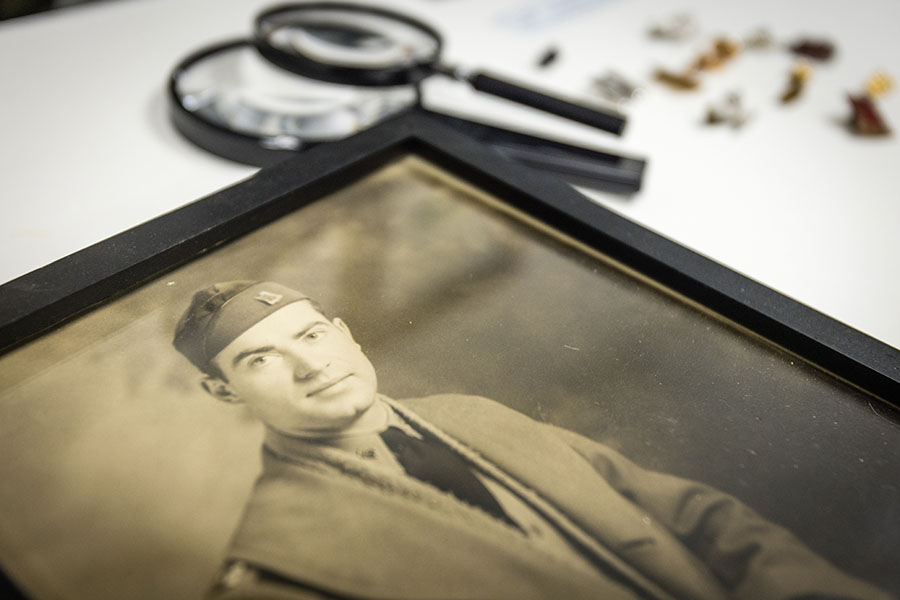
A framed portrait of Ray Miller, who went on to an illustrious military career after joining the 128th Field Artillery of the Missouri National Guard
“Your personality, character, and medical skill are highly praiseworthy. I am happy to congratulate you on the superior service you have performed in the fulfillment of your duties in the White House,” reads the letter, which is signed in black ink by Harry Truman and typed on white paper with a White House letterhead.
For Miller, a 1937 Northwest graduate, it was just one noteworthy achievement during a remarkable military and medical career that will receive new attention after his children donated a large collection of his personal artifacts to the University. Among the dozens of items University Archives received are Ray’s medical equipment, military uniforms, pins and honors, diaries written while he was a high school student and serving in World War II, presidential travel logs and photos as well as additional written correspondence between the Truman and Miller families.
At Northwest, unfortunately, Ray’s story had been lost to the passage of time. It was only when the eldest of his three sons, Doug Miller, contacted the University about taking possession of the artifacts that Ray’s accomplished career gained new light.
“This is a story like I have never seen referenced in any of the Northwest history books or anything that he had any connection to Northwest,” Jessica Vest, the University’s archivist, said. “It’s neat that this all kind of uncovered somebody we had lost track of, so to speak.”
Ray was born in Maryville in 1913 to Nathaniel and Florence Miller as the oldest of four children and began his illustrious military career when he joined the 128th Field Artillery of the Missouri National Guard at age 17. After graduating from Maryville High School, he went on to earn a Bachelor of Science in Education in biology at what was then Northwest Missouri State Teachers College.
During that time, he wed Virginia “Ginnie” Yates, a native of Shenandoah, Iowa, who attended Northwest briefly. The couple was married for 57 years and lived throughout the world before their final decades in Tacoma, Washington. Ray died in 1991, and Ginnie died in 2004; both are interred at Arlington National Cemetery.
“He always wanted to be a doctor, and he somehow managed to find the funds during the Great Depression to go to med school,” Doug said. “He lived and died medicine. Up until his death, he continued to work seven days a week. He’d be a cardiologist five days a week at Western Clinic in Tacoma. Day six and seven – Saturdays and Sundays – he’d put in rounds at nursing homes in Tacoma. So he was incredibly proud of that and his military career especially.”
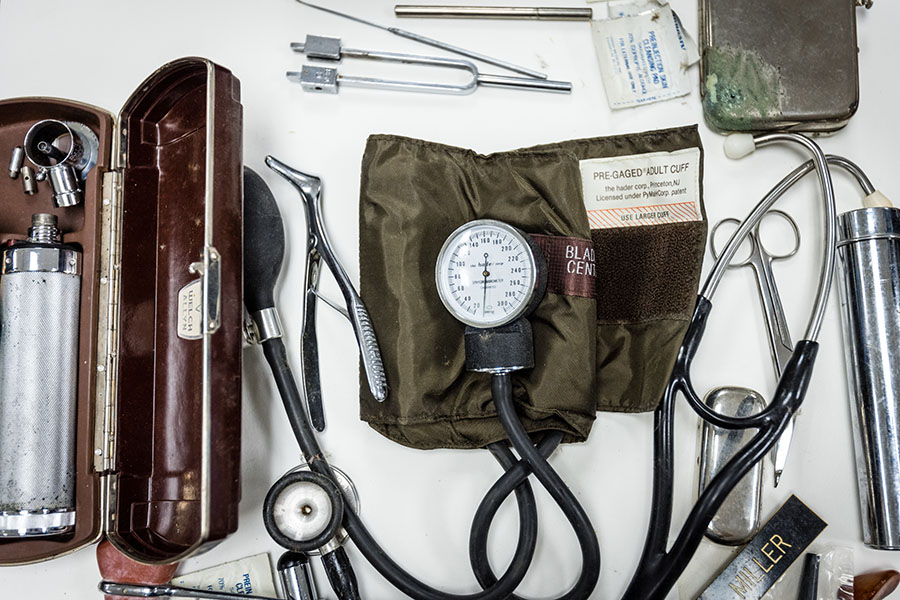
Some of Ray Miller’s medical equipment donated to Northwest includes his physician’s bag with a stethoscope and blood pressure cuff, along with a microscope, field surgery kits and his surgical glasses.
In 1940, as the U.S. edged closer to entering World War II, Ray was a sophomore medical student at the University of Missouri-Columbia when his Guard unit was mobilized. He wound up serving in England and in Germany during the war and participated in D-Day as a tank destroyer artillery officer in First Army under the command of Gen. Omar Bradley.
After Ray returned to the United States in 1945, he resigned his Army commission as a lieutenant colonel and joined the Army Reserves to resume his medical studies. Ginnie worked as a typist in the war department at the Pentagon, and the couple started their family in Arlington, Virginia.
Then in 1950, barely a graduate from George Washington Medical School, Ray was invited to join the Truman family’s medical staff as an Army captain and served until Truman left the White House. As a native of Missouri and member of the 128th Field Artillery during World War I, Truman was well-connected with Maryville veterans. In fact, he visited the Northwest campus on Feb. 20, 1955, to participate in the dedication ceremony of its National Guard Armory building, which is the Jon T. Rickman Electronic Campus Support Center today.
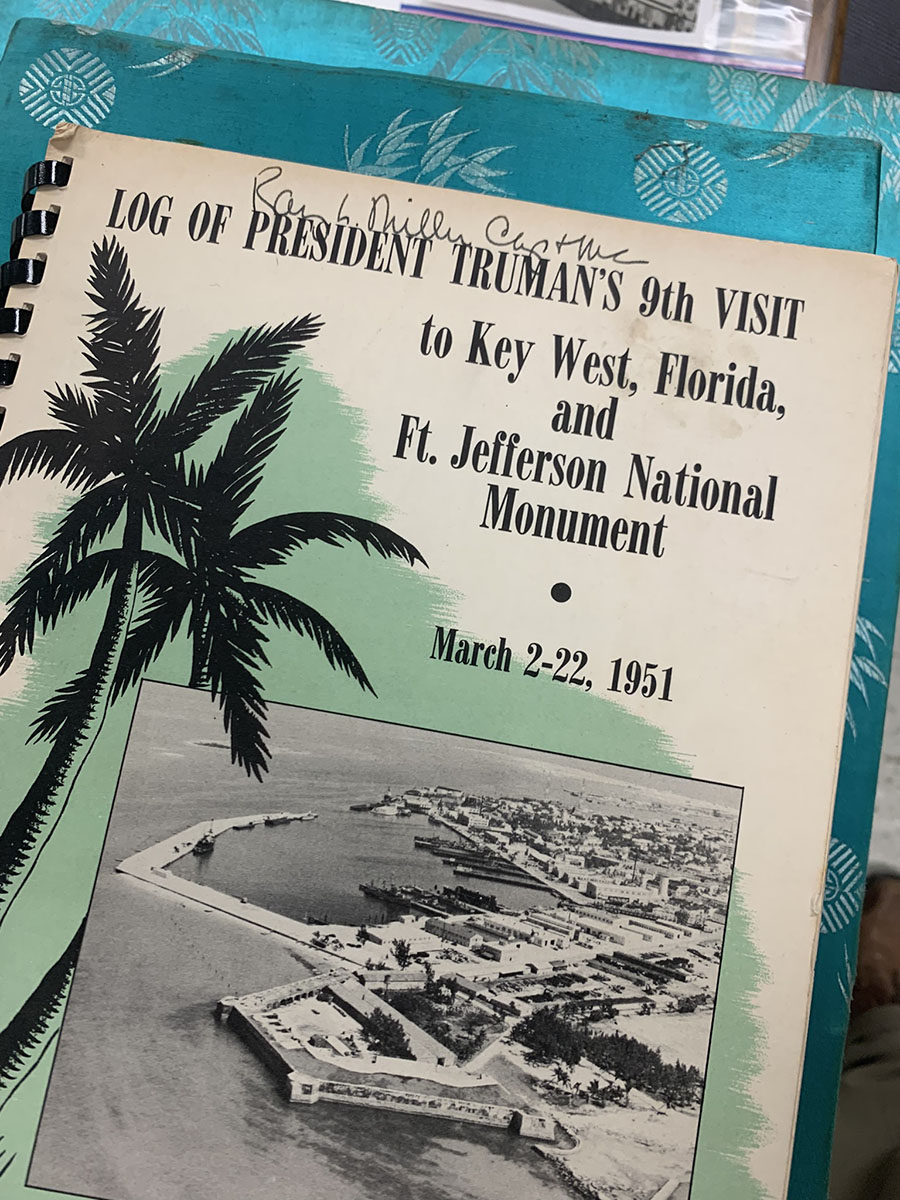
Log books detailing some of President Truman's travels are part of Ray Miller's artifacts donated to Northwest.
Ray served in the White House under Gen. Wallace Graham and was responsible for the medical care of White House residents and visitors in addition to rotating with Graham on coverage of patients at the Walter Reed Army Hospital.
Although Doug was a young boy when the Trumans occupied the White House, he remembers several stories that have become Miller family lore, including a night in March 1952 when Madge Wallace, the president’s mother-in-law, wanted to see the Millers’ youngest son after his birth.
“Mrs. Wallace called my mother and said, ‘I’m sending a limo to the house. I want to see the baby,’” Doug recalled. “This limo pulled up in front of this quite modest apartment complex in Arlington, and my mom and my newborn baby brother were loaded into a limo and went to the White House. (Wallace) took the baby from my mom and rocked my younger brother in a rocker in the private dwelling section of the White House.”
After the Truman presidency, Ray returned to active duty as a major and served again in England and Germany from 1955 to 1959. During the 1960s, he accepted assignments as chief of medicine at Valley Forge in Pennsylvania, Fort Bragg in North Carolina and Fort Lewis in Washington before his service took him to Vietnam, where he served in 1966 and 1967 as commander of the 44th Medical Brigade, overseeing 17 MASH hospitals. He was awarded the Technical Medal First Class for his service as a medical director and the Legion of Merit, the Army’s second-highest decoration for duties not involving ground combat.
Ray then returned to Valley Forge and ended his 26-year active Army career in 1968 as a colonel. He worked the remainder of his life in Washington state as an internist at Tacoma’s Western Clinic and medical director of the Tacoma Lutheran Home.
Vest, with the assistance of three public history students last spring, processed and cataloged the Miller family’s collection. As exhibits are rotated in campus spaces, the items from Ray’s career will be included, as they were last fall at Veterans Commons in Valk Center.
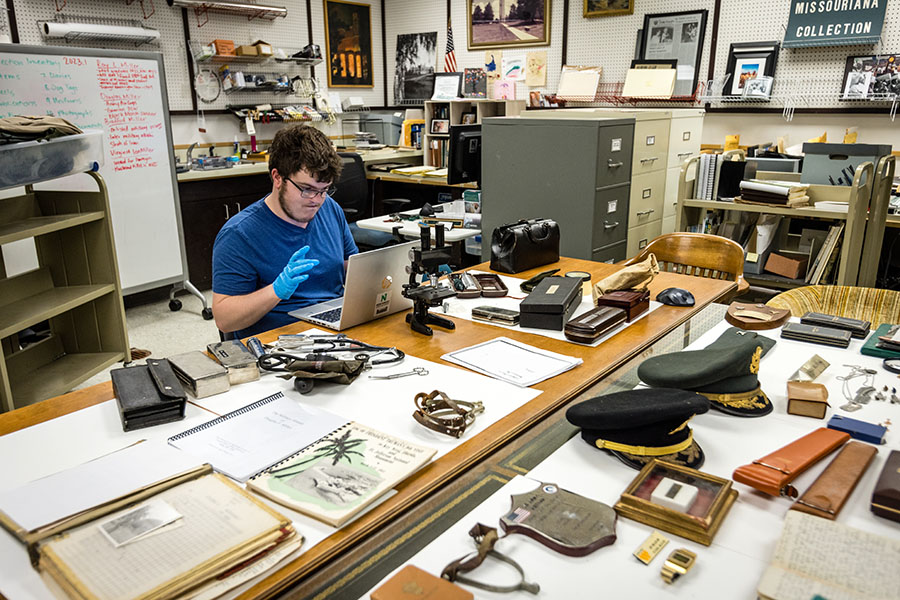
Sam Meservey, a junior history major from Chillicothe, helped catalog Ray Miller’s medical tools as an intern in University Archives.
Internships with University Archives provide history students like Mary Do with unique experiences that help them apply the skills they learn during coursework while preparing for careers. Do, a junior marine biology major and public history minor from Kansas City, is interested in applying the presentation and preservation skills she’s gained at Northwest to work at an aquarium or science museum.
“It’s so cool that our little school and little town of Maryville has such an amazing connection through Ray,” Do said. “Who would’ve thought that we would have stuff that was written by a previous president? It’s been cool to see how much goes into our University Archives and how much we can hold and present to the public.”
In addition to the profession-based learning opportunities that the collection can now offer students and researchers at the University, Doug hopes his father’s artifacts are a source of inspiration and pride for a Maryville native and Northwest alumnus whose military and medical achievements earned him full honors at Arlington National Cemetery.
“You can do anything if you set your mind to it, essentially, and that’s what he taught us as boys growing up,” Doug said. “That was one of the most important tenets we learned from our father was that you can achieve anything if you’re willing to put the time and the effort into it.”